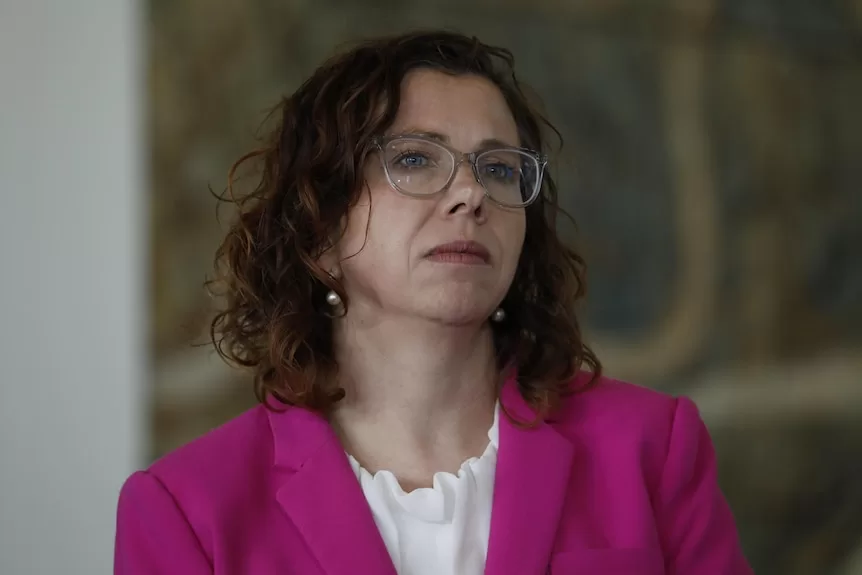Consent educators should use plain, relatable language and start teaching children “well before” their first sexual encounter, according to new federal government guidelines.
The guidelines are intended as a practical resource for teachers, employers and community leaders.
While they do not affect the legal definition of consent, which varies across jurisdictions, the government hopes they will promote “a shared community understanding” of sexual consent.
The guidelines reflect the difficult balance educators must strike.
They call for a “sex-positive” approach to better connect with young people but also advise sensitivity to differing cultural and religious attitudes towards sex.
And they encourage pushback against “harmful” gendered assumptions that normalise sexual violence, but anticipate “backlash” from young men and recommend a “non-judgemental” approach.
Social Services Minister Amanda Rishworth said the guidelines would help fulfil the national ambition to end violence against women and children within one generation.
“Young people are at the heart of this cultural change,” Ms Rishworth said, noting one in two women in their 20s had experienced sexual violence since the age of 15.
“Through strong prevention messaging and initiatives that positively shift cultural attitudes around gender-based violence, we can ensure our young people understand how to establish and maintain healthy and safe relationships.”
Sexual assault support lines:
Frank and fearless
The government suggests the use of “simple, clear and direct language” is most likely to be effective.
It says Young people “want information that is open and frank, and that acknowledges their autonomy and lived experience, while being age-appropriate”.
It says metaphors involving sports or food are to be avoided because they “risk trivialising and oversimplifying issues, reinforcing the idea that sex is too taboo or awkward to discuss, and confusing their audience with unintended meaning”.
In 2021, a federal government consent education video was pulled promptly after its release due to feedback that its use of a milkshake metaphor was “cringeworthy” and “a big fail”.
The new guidelines advise educators to “actively challenge harmful and persistent myths and misconceptions” such as the notion that men are entitled to sex, that male aggression is normal, or that women often lie about sexual assault.
However, the government warns “backlash” to this is likely, noting young men are more likely than young women to hold misconceptions about consent.
It recommends “meeting the concerns that underpin the backlash from a place of compassion, respect and non-judgement … groups who are resistant to messages around consent and healthy sexual relationships may feel defensive, helpless, unable to take responsibility for behaviour, deny or minimise behaviour, or blame others”.
The guidelines also suggest avoiding negativity, noting consent education can turn young people off when they “focus on fear … [and] create stigma and shame”.
Educators are advised to emphasise that “mutual preferences, pleasure, respect and equality” can make sexual relationships more desirable and “improve perceptions about the quality” of sex.
However, educators “should not assume that all people want to be sexually active, and should acknowledge that some people and communities consider sexual relationships should only occur within marriage”.
The guidelines also recommend beginning education “well before” children are likely to have their first sexual experience.
No specific age is prescribed, but the guidelines cite evidence that the average age of first sexual activity is 15 and the average age at which children first view pornography is 13, adding that pornography consumption is “not uncommon” for children as young as eight or nine.
Consent education advocate Chanel Contos, the founder of Teach Us Consent, called the framework “an important contribution to ensuring messaging around the fundamentals of consent are clear and cohesive”.
“It will help community leaders and organisations provide consistent messaging to youth as we take a whole-of-community approach to eradicating sexual violence,” she said.
Ms Contos added more work was needed to address the specific harms caused by pornography.
“We need to see a greater focus on pornography and technology-facilitated abuse in the community when navigating these conversations and educating young people,” she said.
‘Affirmative’ consent
The guidelines also offer a definition of sexual consent as “a free, voluntary and informed agreement between people to participate in a sexual act”, adding such agreement “is only present when these people mutually and genuinely want to engage in that sexual act, and actively ensure their partner does too”.
The government has emphasised this is not an attempt to create a shared legal definition of consent.
However, the suggestion that consent must be actively sought out is consistent with the legal model of affirmative consent, which has recently been introduced in several jurisdictions.
Loading…
It contrasts with models of consent that place the onus on an individual to express consent.
Last year, a Senate inquiry considered whether the federal government should lead a process to harmonise consent laws across jurisdictions. The inquiry was inconclusive and noted the risk that harmonisation could result in “levelling down”.
Ms Contos said harmonising consent laws was a “logical and important next step in the pursuit to deliver consistent and clear messaging”.
The federal government has not committed to leading a harmonisation process and regards legal definitions as matters for the states.
